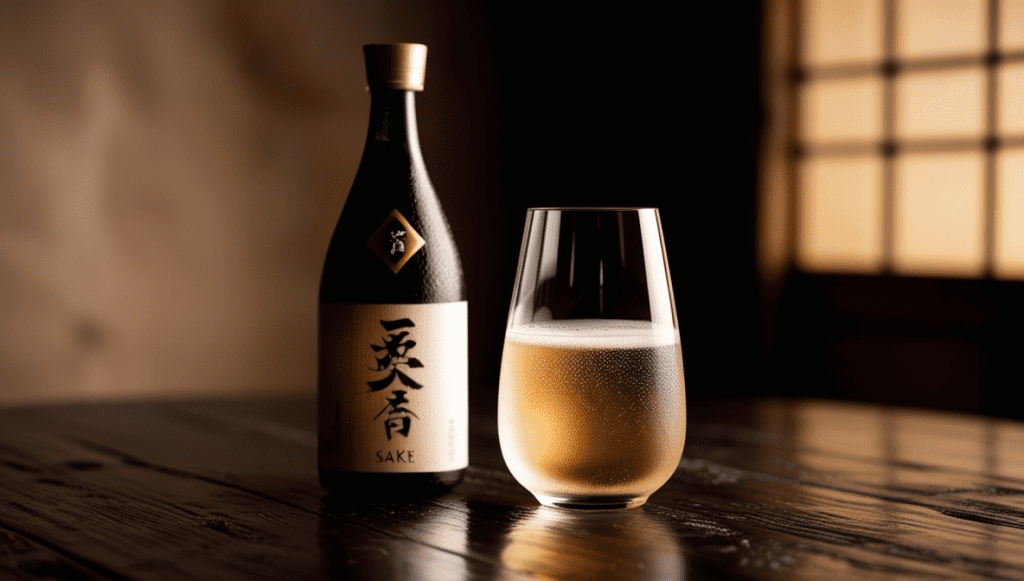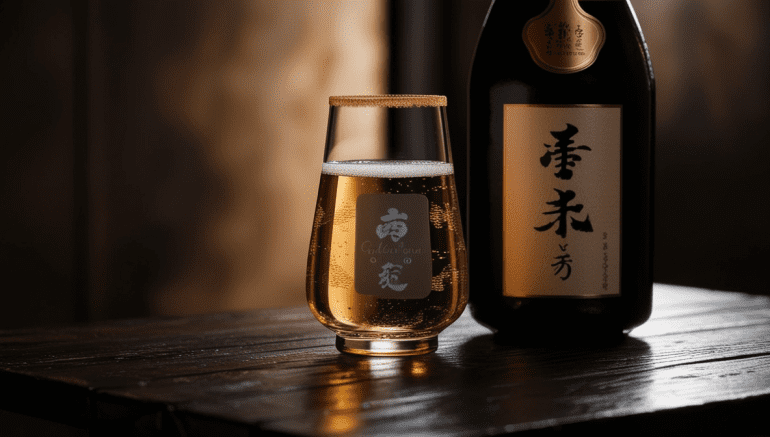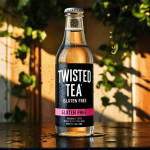The gluten-free status of sake is somewhat complex and depends on the type of sake. Here’s a detailed overview based on the search results:
Premium Sake:
- Junmai Sake: This type of sake is made from rice, water, yeast, and koji (a rice-based fermentation starter) and does not contain added distilled alcohol. Junmai sake is considered 100% gluten-free.
- Other Premium Types: Other premium sakes, such as Ginjo and Daiginjo, may have a small amount of distilled alcohol added, but this alcohol is typically derived from gluten-free sources like sugar cane. Therefore, these sakes are generally safe for those with gluten sensitivities.
Non-Premium Sake (Futsushu):
- Non-premium sake often contains added ingredients and flavorings that may include gluten. This type of sake is less regulated than premium varieties, making it riskier for individuals with gluten intolerance or celiac disease.
Koji:
- The koji used in sake is always rice-based, which means it does not contain gluten. Misconceptions about koji being made from barley or other gluten-containing grains are incorrect.
Distilled Alcohol:
- While some non-junmai sakes may contain distilled alcohol derived from grains that could potentially include gluten, the distillation process generally removes harmful gluten peptides, making the final product safe for most people with gluten sensitivity.
Recommendations for Gluten-Sensitive Individuals
- Choose Junmai or Premium Sake: For those with gluten sensitivities or celiac disease, it is safest to choose junmai sake or other premium types that do not contain added distilled alcohol.
- Avoid Futsushu: It is advisable to avoid non-premium sake (futsushu) due to the potential for gluten-containing additives.

What Types of Sake Are Considered Gluten-Free?
Most types of premium sake are considered gluten-free, particularly:
- Junmai Sake: This is pure rice sake made from only rice, water, yeast, and koji (a rice-based fermentation starter). It does not contain any added distilled alcohol, making it the safest option for gluten-sensitive individuals.
- Ginjo and Daiginjo Sake: These premium varieties may have a small amount of distilled alcohol added, which is typically gluten-free if derived from gluten-free sources.
- Nigori Sake: This is coarsely filtered sake that can also be gluten-free if it adheres to the same production standards as junmai.
How Is Gluten-Free Sake Made?
Gluten-free sake is made using the following ingredients:
- Rice: The primary ingredient, which is naturally gluten-free.
- Water: Essential for the fermentation process.
- Yeast: Used to convert sugars in the rice into alcohol.
- Koji: A mold that helps convert starches in rice into sugars, and it is always rice-based in traditional sake production.
The brewing process involves steaming the rice and allowing it to ferment with the koji and yeast. Since all these ingredients are gluten-free, premium sake made from them is safe for those with gluten sensitivities.
Are There Any Risks Associated with Non-Premium Sake for Gluten-Intolerant Individuals?
Yes, non-premium sake, known as futsushu, may pose risks for gluten-intolerant individuals because:
- It can contain additives and flavorings that might include gluten.
- Non-premium sakes are less regulated regarding ingredient transparency, meaning they may not disclose all components on their labels.
- Some non-premium sakes might be produced using barrels that have been treated with wheat-based adhesives or other gluten-containing substances.
Can Sake Be Contaminated with Gluten During the Aging Process?
Yes, there is a potential risk of cross-contamination during the aging process if sake is aged in barrels that have been treated with gluten-containing materials. However, most traditional sake barrels do not use gluten adhesives. If sake is aged in wine barrels or other non-standard containers, it may introduce a risk of gluten contamination. It’s essential to check labels or consult manufacturers about their aging processes.
What Are the Main Differences Between Premium and Non-Premium Sake?
Ingredients:
- Premium Sake: Made from only four ingredients—rice, water, yeast, and koji—without any additives or flavorings.
- Non-Premium Sake (Futsushu): May contain various additives and flavorings that could include gluten.
Quality and Production Standards:
- Premium Sake: Adheres to strict production standards and regulations in Japan (tokutei meishoshu), ensuring higher quality and safety regarding gluten content.
- Non-Premium Sake: Less regulated, allowing for a broader range of ingredients and production methods.
Flavor Profile:
- Premium Sake: Typically has a more refined taste and aroma due to careful brewing methods.
- Non-Premium Sake: May have a more straightforward flavor profile due to the use of additives.
How Does the Brewing Process of Premium Sake Ensure It Remains Gluten-Free?
The brewing process of premium sake ensures it remains gluten-free through the use of only four primary ingredients: rice, water, yeast, and koji (a mold used to convert starches into sugars). Here’s how each component contributes to its gluten-free status:
- Rice: The main ingredient in sake, rice is naturally gluten-free.
- Koji: This mold is typically grown on steamed rice, and since it is derived from rice, it does not contain gluten.
- Yeast: The yeast used in fermentation is also gluten-free.
- Brewer’s Alcohol: In some premium sakes, distilled alcohol may be added. This alcohol is usually derived from gluten-free sources and undergoes a distillation process that removes gluten proteins.
Because all these ingredients are gluten-free, premium sake, particularly varieties like Junmai, is considered safe for individuals with celiac disease or gluten intolerance.
Are There Any Specific Additives in Non-Premium Sake That Might Contain Gluten?
Yes, non-premium sake (known as futsushu) may contain various additives that could include gluten. Unlike premium sake, which adheres to stricter production standards, non-premium sake can have:
- Flavorings: Some flavorings may contain gluten or be derived from grains that contain gluten.
- Additives: Non-premium sake can include a variety of additives not typically found in premium varieties, which may not always be disclosed on the label.
These factors make non-premium sake riskier for those with gluten sensitivities.
What Are the Health Benefits of Drinking Gluten-Free Sake?
Drinking gluten-free sake can offer several health benefits:
- Low in Calories: Sake generally has fewer calories compared to many cocktails and flavored beverages.
- Rich in Amino Acids: Sake contains amino acids that can help improve metabolism and support muscle health.
- Contains Antioxidants: The fermentation process can produce antioxidants that may benefit overall health.
- Promotes Digestion: Koji used in sake production can aid digestion due to its enzymatic properties.
How Can I Tell If a Sake Brand Is Gluten-Free Just by Looking at the Label?
To identify whether a sake brand is gluten-free by examining the label:
- Look for Premium Designations: Check if it is labeled as “premium” or includes terms like Junmai, Ginjo, or Daiginjo, which are generally safe.
- Check for Gluten-Free Labels: Some brands may explicitly state “gluten-free” on their packaging.
- Ingredient List: Review the ingredient list for any mention of additives or flavorings that could contain gluten.
- Contact the Producer: If unsure, contacting the producer directly for clarification on their brewing practices can provide additional assurance.
In summary, while many types of sake are considered gluten-free, especially premium varieties like junmai, caution should be exercised with non-premium sakes due to their potential for containing gluten. Always check labels and opt for certified gluten-free products when available to ensure safety.












